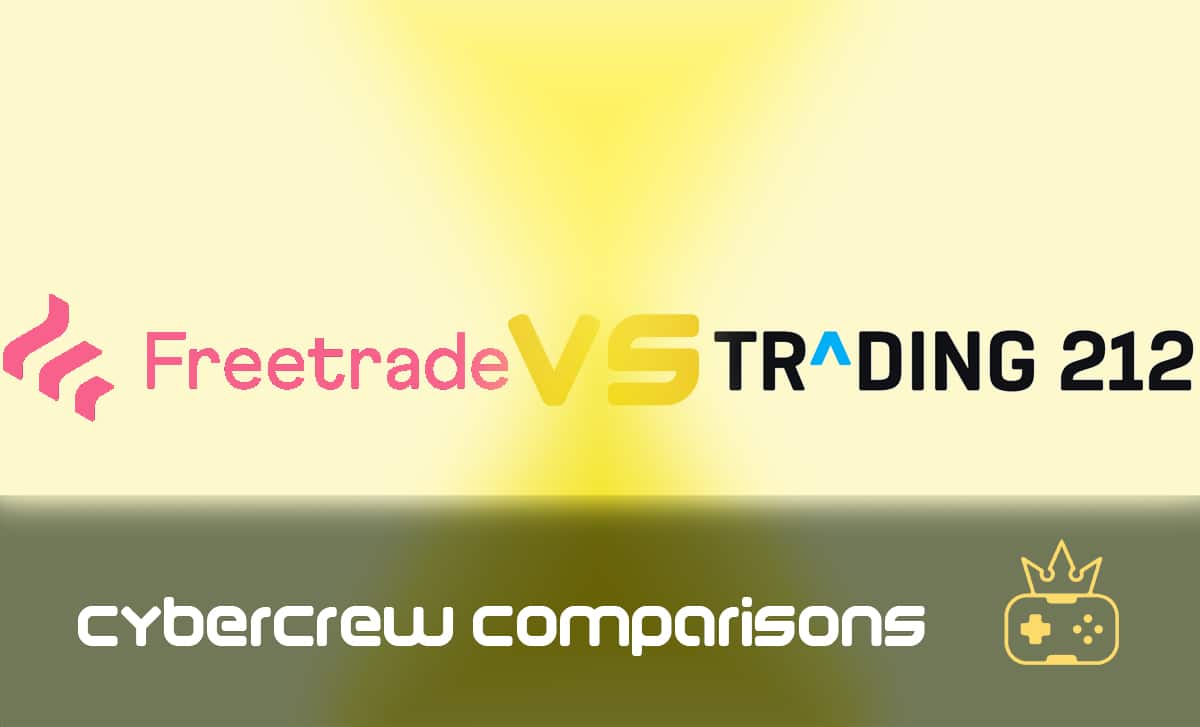What Is Cryptocurrency?
Last Updated: February 9, 2024
Have you noticed that suddenly everyone you know wants to talk about crypto? And it’s not just Bitcoin and Ethereum anymore. Everywhere you look, from Youtube to TikTok, you see self-proclaimed crypto experts explaining how to use cryptocurrency and why you should buy some coin that will “go to the moon” and make you the next Jeff Bezos.
And if that’s not enough, we have people like Elon Musk that hold so much power they can single-handedly change the value of an asset with just one tweet (yes, that really happened).
Crypto is a dangerous game for those that don’t take it seriously.
Maybe you’re thinking of investing yourself, but no one’s ever really told you what is cryptocurrency, how does cryptocurrency work, and where you can get it. Or you just want to see what all the craze is about and learn something new. Whichever it might be, you’re at the right place, so keep reading.
What Is Cryptocurrency?
To understand cryptocurrency, first, you should know what currency is. To explain currency, we’ll go way back in history, to the earliest stages of society when there was no such thing as money. So, to “buy” something you need, you’d have to trade something you own.
This old method of exchange, also known as the barter system, has been practised for centuries, and it dates back to 6000 BC. An example of the barter system would be trading a chicken for wool or milk. But, as it turns out, this was an inefficient method of exchange.
The problem with this system was that even though one person had something the other one needed, they didn’t necessarily want what they were offered for the exchange. Or, the person that had wool didn’t need a chicken, so why would they trade their product?
And this is where currency came in. Coins. Made primarily out of gold and silver. We call our currency “pound” because “one pound” used to equal one pound weight of silver.
Anyway, the introduction of silver and gold coins began the method of exchange as we know it.
Let’s jump to the establishment of banks and governments. People realised that trust in the system could move them away from carrying blocks of precious metal. Thus the first money was printed and put into use. Convenient, right?
But, we as humans are always looking for a way to make our lives easier, so we landed on digital wallets and digital payment systems, online shopping, and online banking. Today, most of our purchases are online or using our credit cards. As a result, we have less and less contact with paper money.
So, in the quest of making our everyday lives even more convenient — comes cryptocurrency. One way to think of it is that it is 100% virtual. And, as is known, we love anything virtual.
You might think that cryptocurrency is fairly new, but it was invented 14 years ago, back in 2008, by an unknown person or a group of people going by the pseudonym Satoshi Nakamoto. And yes, you guessed it right — the first crypto ever created was Bitcoin.
So what’s the definition of cryptocurrency?
Cryptocurrency is digital money or any form of digital currency that uses cryptography to secure transactions.
Now that the cryptocurrency meaning is covered, let’s quickly compare crypto and fiat money.
The difference between cryptocurrency and fiat money is that crypto doesn’t have a centralised issuing or regulatory authority (like central banks and governments). Instead, it uses a decentralised system to record transactions and issue new units, which we’ll explain briefly.
Cryptocurrency was mainly created to fix the issues of traditional centralised currencies by putting the power in the currency holders’ hands. So, how exactly does that work?
How Does Cryptocurrency Work?
Here’s an obvious question — what is cryptocurrency used for?
Today, you can pay for goods and services using cryptocurrency. You can also get paid in cryptocurrency and make private transactions or do low-cost money transfers. But, most of the world is investing in crypto and treating it as an asset.
The individuals who consider themselves risk-takers are slowly moving away from investing in stocks and bonds and instead are turning to crypto.
But just like traditional investing, you can’t go all-in on Bitcoin or Doge. Instead, your safest bet is creating a diversified portfolio consisting of different types of cryptocurrency that you’ve spent time researching and studying.
How can a currency work if there isn’t a regulatory agency that controls its value?
The idea behind crypto’s decentralised system is that the tasks usually managed by a country’s authorities are now broadly distributed amongst its users.
That is achieved through blockchain technology.
Blockchain Explained
Satoshi Nakamoto explained Bitcoin as “an electronic payment system based on cryptographic proof instead of trust”. This proof comes in the form of transactions verified and recorded on a blockchain.
When you order something from Amazon, your bank edits your spreadsheet saying that you have £20 less. Amazon’s bank does the same to Amazon’s spreadsheet and adds an entry that says they now have £20 more.
Instead of all banks having separate sheets, in crypto, you have one single sheet called a ledger that covers all the transactions ever made in code. So it essentially consists of what every cryptocurrency user ever buys, transfers, or sells, and it’s public.
Everyone who uses the cryptocurrency has access to the ledger in order for a unified transaction record to be created. This ledger is called a blockchain because the new transactions are recorded on a “block” later linked together with the “chain” of previous transactions.
But there has to be some form of security or protection from fraud, right? There is, and it comes in two forms: proof of work and proof of stake.
Proof of work is the more complicated of the two validation techniques used to verify transactions before they are added to the blockchain. Namely, in this method, an algorithm provides a mathematical problem that computers race to solve.
The first computer (miner) that solves it gets rewarded with a small amount of the cryptocurrency for its effort. This process, however, uses an insane amount of electricity and needs extreme computer power. As a result, the miners spend 60-80% of what they earn only to cover these expenses.
On the other hand, there is proof of stake. If they want to be a part of the verification process, crypto owners put at stake an X amount of the currency they own. The more amount you’ve put at stake, the most likely it is for you to be chosen to do the verification.
Suppose you’re chosen to be the validator. In that case, you will be rewarded with crypto, possibly in the amount of aggregate transaction fees from the block of transactions. Note that if you verify invalid transactions, you forfeit a part of what you staked.
What Is Cryptocurrency Mining?
If you want to learn all about cryptocurrency, you can’t skip the chapter about mining.
Like with fiat money, when one person spends cryptocurrency, the ledger must be updated by debiting one account and crediting another. To prevent fraud, each transaction has to be verified. That is where miners come in.
As we’ve mentioned before, during the process of validating crypto transactions on the cryptocurrency blockchains, the computers (miners) get a mathematical problem they need to solve in order to verify a transaction.
Mining is an activity performed by a network of participants involving proof of work and results in generating new coins for the miner who successfully did this proof of work first for each new block.
Crypto mining prevents double-spending of digital currencies.
To participate in mining, you need a lot of processing power, which explains the recently increased demand for graphics processing units. But, with the difficulty of mining top crypto like Bitcoin increasing rapidly, and the profits you’d get from mining barely covering electricity, you might want to reconsider.
Types of Cryptocurrency
If you’re thinking about trading cryptocurrencies, or simply want the breakdown of the most popular ones out there, let’s begin.
More than 8000 cryptocurrencies exist at this very moment.
Part of the reason there are so many cryptocurrencies is because it’s relatively easy to create them. But, unfortunately, many of them have little to no following, and you’ve probably never heard of them.
Bitcoin was the first cryptocurrency ever to exist, and all others are referred to as “altcoins”.
The terms “coin” and “token” are often used interchangeably, but there are differences between them. Mainly, coins act similarly to traditional money and can be used for purchases. However, tokens have far more use than digital money. For example, they can be used as part of software applications or even represent digital art (NFTs, here we come).
Check out the differences between coins and tokens in the table that follows.
| COIN | TOKEN |
| Similar to physical currency | Digital asset issued on a particular project |
| Operates on its own blockchain | Built on top of an existing blockchain |
| It can be used as a source of payment | Variety of uses (payments, security, asset representation) |
| Mostly distributed through mining | Mostly distributed through Initial Coin Offerings |
We’ll categorise Bitcoin plus some altcoins that you might want to put on your watch list into five different crypto functions:
Currency — the most commonly known use of crypto. You can purchase goods and services with these digital currencies.
- Bitcoin Cash — a spin-off to the world’s first decentralised cryptocurrency Bitcoin. Bitcoin Cash has a lower transaction cost and transfers data more quickly than Bitcoin. Bitcoin Cash currently stands at £215.44 with a market cap of £4.001 billion, and Bitcoin at £27,766.51 with the number one market cap of £541.699 billion.
- Litecoin — a peer-to-peer crypto and open source software project. LTC is decentralised money, free from censorship, and open to all. Using Litecoin, you can send low-cost, private, secured, borderless payments to anyone. It’s among the oldest and most used cryptocurrencies that still exist in the top ten cryptos by market cap — £5.694 billion. LTC is worth £79.97 today.
- Dogecoin — what started off as a meme coin, today has a market cap of £13.958 billion. Today, Doge stands at £0.10, but back when it was created, it took the world (or social media) by storm, and today it still manages to be a part of the top ten cryptos with the biggest market cap.
Stablecoins — a type of digital asset with a stable valuation like flat currency. Although we consider them stable, they provide the utility and mobility of crypto — a bridge between the two worlds.
- Tether — the idea behind Tether is to combine the benefits of cryptocurrency with the stability of the government-issued currency. Tether is hosted on Ethereum’s blockchain, and its current value is £0.75, with a £58.096 billion market cap.
- USDC — with a goal to make traditional payments faster and cheaper, USD is managed by a consortium called Centre, including members from the crypto exchange Coinbase and Bitcoin mining company Bitmain. Currently standing at £0.75, USDC has a market cap of $49.9 billion (roughly £37 billion).
Stablecoins are always backed by a reserve — either a fiat currency, a cryptocurrency, or a commodity. Both Tether and USDC are backed by the US dollar.
Proof of Stake – the mechanism regulating transactions between users, ensuring they are verified and added to a public ledger.
- Ether — the token by which you make a payment in the Ethereum network. Ethereum is the second best-known cryptocurrency in the world other than Bitcoin, with a market cap of £236.969 billion and a price currently standing at £1,983.68 billion. According to Ethereum, Ether should be considered as fuel for the apps on the decentralised Ethereum network.
- Cardano — Cardano facilitates peer-to-peer transactions with its internal cryptocurrency ADA. Investing in Cardano involves buying ADA, which has grown to become one of the most valued digital assets on the market. Using Cardano tokens, you can pay for services on the network or buy/sell them in US dollars. Cardano’s worth is £0.77 today, with a market cap of approximately £26.008 billion.
- Solana – with its ability to handle far more transactions per second than Ethereum, Solana is attracting developers. It has its own internal cryptocurrency SOL, and it is currently worth £72.77 and has a market cap of £22.931 billion.
DeFi (Decentralised Finance) – apps that use public blockchain and crypto assets to disrupt traditional finance sectors.
- Uniswap — a cryptocurrency exchange that uses a decentralised network protocol and has proven exceptionally popular in a short period of time. The protocol facilitates automated transactions between crypto tokens on the Ethereum blockchain using smart contacts. Today’s Uniswap price is £8.65, and its market cap is £5.425 billion.
- Chainlink — a network intended to facilitate the transfer of tamper-proof data from off-chain sources to on-chain smart contracts. Chainlink is a decentralised blockchain oracle network built on Ethereum. Its price is £12.65 with a market cap of £5.907 billion.
NFT — digital assets with unique data secured and backed by blockchain technology. They are verifiable, and their ability to ensure copyright is respected.
- Algorand — a promising investment for 2022. The Algorand platform supports small contracts. Its consensus algorithm is based on proof of stake, and its native cryptocurrency is called ALGO. With a current price of £0.70, it has a market cap of £4.598 billion.
Advantages and Disadvantages of Cryptocurrency
Using cryptocurrency can open many doors for individuals and businesses. However, experts have mixed opinions about using and trading cryptocurrencies. If you want to gain the advantages of cryptocurrencies, you must be willing to take a risk and believe in the new technology that’s taking the world by storm.
What are the benefits of cryptocurrency?
- Crypto enables peer-to-peer payments without a third party, for example, a bank being involved.
- No payment processing fees.
- A transaction made using crypto is generally a quick and straightforward process.
- Every transaction ever made is recorded on the ledger. You can easily trace the coin’s history and stay protected from fraud if need be.
- Don’t forget that crypto is an investment with the potential to make you rich if you put in the work and do your research.
What are the disadvantages of cryptocurrency?
- There is a slight chance you might lose your digital wallet or delete your currency.
- The values of cryptocurrencies are highly dynamic. Your Bitcoin could be worth £50,000 one day and half that amount the next.
- The cryptocurrency market is not regulated by the Financial Conduct Authority (FCA).
- Cryptocurrency can be vulnerable to scams and cyber attacks.
Is Cryptocurrency Safe?
Some critics say that crypto is a highly speculative investment with a potential for intense price swings. And with reason. Crypto has historically had very volatile prices.
In terms of investing, it is risky to put your money in crypto, but it’s potentially extremely profitable. You should never go all-in on any cryptocurrency, no matter which “expert” said so.
In terms of making transactions with crypto, it is safe to say that transactions are very secure despite its decentralised network.
So, crypto is riskier if you look at it as an investment, but your money is safe being transferred using blockchain technology.
Wrap Up
In the ever-changing era we live in, being left behind is scary. We all want to be caught up on the newest trends and up to date with what’s in. And crypto is definitely in right now. Bitcoin and Ethereum are only the surface of the ocean that is cryptocurrency.
Hopefully, you found this article helpful, and you gained a better understanding of what is cryptocurrency, the types of cryptocurrency, the most used cryptocurrencies, and cryptographic techniques.
The best advice we could give you is to only invest in crypto with money you can afford to lose. So don’t miss out, but be careful. And do your research!
FAQ
Nearly $700 billion (roughly £520 billion) of value has been erased in the latest market correction. It ended up reducing the market cap from £1.72 trillion at the start of 2020 to £1.19 trillion at the end of January 2022.
As of January 2022, there are more than 8000 cryptocurrencies in existence.
Crypto was created to fix the problems of traditional, centralised currencies by making the currency’s holder in charge.
In 2008, the first and best-known cryptocurrency — Bitcoin, was created by an unknown person or group of people going by the name Satoshi Nakamoto.



![How to Sell on Depop in the UK [2024 Guide]](https://cybercrew.uk/wp-content/uploads/2023/06/Selling-on-Depop-UK.png)






